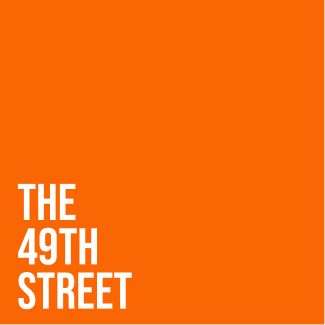by Ifeoluwa Olutayo

On November 9, 2024, I stopped at a point in the Goethe Institute‘s Dreaming New Worlds initiative’s run of programmes: an art exhibition titled Kedu Lagos, its holding situated at the Old Printing Press in Marina, Lagos.
Kedu Lagos is in itself a questioning of the African experience engaging the politics of Lagos Living in diverse mediums and approaches. There’s much that has been said about the cosmopolitan city that is Lagos. Still, the artists (and collectives) on display were operating across different fields, and fusing at times, science and technology into their art in a way to challenge us to reorient our minds towards other possibilities and reimagine futures across personal, interpersonal and socioeconomic considerations, not only in Lagos, but as a nation in whole.
As the curator, Chinyere Obieze remarked about the name of the exhibition, paraphrased “Kedu Lagos is inspired in part, by the Hello World program. A way to introduce the works of this ilk, to present these reimaginings to the city.”
The Chronoverse Collective (Olúbùnmi Atere, Olorunyemi Kolapo Obadiah, Adewale Simileoluwa Isaac Johnson) has such a reimagining in mind with their project, Totem, on display at the exhibition.
The installation spans a significant portion of the exhibition floor with a marked-out path with PV columns of light that respond to the viewer’s walk and the paths chosen, bringing a very engaging and interactive installation to those experiencing it. The walk, like Olorunyemi Kolapo (a member of the Chronoverse collective) mentioned, is a mirror of the choices we make as people in this chaotic world (you’ve seen Lagos), and in a sense, is an invitation to experience that walk in the context of socioeconomic considerations.
Wooden panels are a key part of the installation, most of them bearing Nsibidi symbols, one of the oldest (if not the oldest) forms of writing in Africa. The writing system is known for its representation, not of specific words, but of concepts and abstractions.
I spotted symbols for interconnectedness (spirals) and of the Ikenga, a powerful deity among the Ibo people. The spirals point to the fact that as humanity, there are always connections across cultures and peoples, and those connections foster a unique (and sustainable)way to communicate and forge a new path into the future. The spirals are everywhere in this installation, painted onto the wooden panels, in the clay brick supports lining the reinforcing these ideas for those who are to witness the work.
The Ikenga is a representation of a man’s chi (personal god), his ancestors, and Aka Ikenga ( the Ikenga’s potency is grounded in the belief that the power of success is in a man’s right hand) among other things.
Totem by The Chronoverse Collective.
One also notices the very similarities between the symbols marked on the installations and Chinese script, a connection that, as I was soon to find out, was one of the bases of the installation. The collective sought to represent a socioeconomic Nigerian reality, and in that very focus, they drummed in on the Igba Boi apprentice system among the Ibos, an entrepreneurship system that has fostered economic excellence for the Ibo people for centuries. In considering what other systems serve similar positions in other countries, eyes were turned to what Kolapo, one of the collective members, mentioned was called the Chinese Shifu Tudi System.
Kolapo mentioned how the Chinese found increased economic power through the apprentice system, implemented on a larger scale. They would send their citizens to developed economies and have them school there, then return to implement their knowledge for the good of their country’s economy.
In talking about this, the ideas were very clear; the collective hope that by assembling these connections, facilitating an interesting cultural exchange by virtue of this installation and juxtaposing these symbols, people can make connections and consider such a system as a possible path (see what I did there) for Nigeria’s economic growth, and for me, a way to preserve the cultures that bind us and to continuously pass the knowledge for success down generations, just as the apprentice system is one of mentorship and nurturing.
It’s not far off, according to Kolapo, as we have numerous success stories stemming from the Igba Boi system in Nigeria. The theory is great, and these stories (pillars of the economy) buttress this installation’s argument; it is possible to imagine a future where widespread implementation of these systems can position us for exponential growth. The installation’s arguments are compelling, even for those who may doubt its possible acceptance and implementation, and it serves as a way to reconsider connections, community, intergenerational dialogue and economic progress.
As my first point of contact at the exhibition, it was an engaging marriage of technical interactivity and socioeconomic conversations, staying true to the thematic pursuit of Dreaming New Worlds.
Totem by the Chronoverse Collective.
There’s one idea around legacy, love and memory that I have found very interesting in the last few years and comes from a wholly unexpected place (well maybe not). The film, Coco. the Oscar-nominated animated film spun a certain thread on fading into the obscurity, the nothingness, the void. Once no one alive remembered you, you died another death in the afterworld, a fading away. It’s one idea that I also saw play out in different interpretations of Mythology and Deity. Once the people forgot the gods, they faded away or became redundant. Belief gave them relevance, Worship was the source of their sway and power.
The act of remembrance is in itself a science of resistance, of reinforcing our connections to these memories by paying visits to right the threads that bind them to corporeality. We are shaped by our experiences, but our memories serve the task of reinforcing that identity. With Memorium, the installation of the Source Code Collective (Neec Nonso, Olajide Ayeni, Adeleke Ayomitunde & Femi Fala), we find an interesting exploration of memory, and in particular, nostalgia, presented with diverse mediums (photography, simulation and light), exploring what we remember and what we do not.
Femi Fala’s work is something I’m familiar with, and his immersive installations are brought into a play of light and memory. Half-remembered memories and interactions are incorporated into a screen and movement across the screen starts the interaction, linking audiences to these memories, these pieces of nostalgic times for the artist. The interactivity is contextualised in the absence of an audience, with the words, “We Only Exist In the Minds of Those Who Exist” flashing across the screen in its resting state.
This sentence embodies the very essence of that fade, the consequences of memory and what we choose to remember and preserve, in a more general interrogation of our relationship with memory and nostalgia.
Femi Fala’s Light Installation
We are also surrounded by images, courtesy of Neec Nonso, a photographic walk through memory’s befuddled lane, one that bears his late mother. We are once again, walking a path of memory, of how they shape connections and how this chemical process of a physical image, and the fading of it (some of the images are fading, victims of time and weather) is linked to this preservation of connection, providing some physicality to the absence. I wonder about loss, myself a victim of this experience presented, and about how this chemical process in some way, affects how we remember the people we lose.
Neec Nonso’s Photographs.
On the screen also, there’s a simulation presented of microorganisms and how they react to external stimuli, and as Femi Fala mentioned, is in some ways, the only way they remember.
Ayomitunde worked on research and acquired the footage, and Femi made a computer simulation with that, overlaying the microscopic footage and the simulation over each other, creating a mesmerizing reimagination of instant memory, for the lack of a better term.
Adeleke Ayomitunde’s Microorganism Simulation.
Olajide Ayeni’s contribution to this museum of memory is in structures. It’s an examination of forgotten structures, lost through collapse, destruction, vandalisation or demolition (sometimes with the loss of inhabitants), with a focus dwelling on Lagos. This examination of the fate of material culture (after all, Architecture is a form of expression and it is shaped by human needs and socio-cultural considerations.) is key in reimagining a future for physical spaces.
As Ayeni shared with me, “While sharing thoughts with the curator we tried to look at the irony of destroying things to create something new, and if we can create new buildings or infrastructure without not necessarily destroying the old.”
Ayeni also designed the installation space, Memorium.
According to Ayeni, “We called it the Memorium because it is a hall of (personal, collective and evolutionary-biological) memories. In designing and building the installation, we made use of materials and colours that would help the viewer take in the installation, projection, and hopefully reflect their personal experiences through the memorial pieces.”
In a holistic sense of consideration, the collective is experimenting with new digital forms available and reimagining memory in the context of all those technologies. The goal, it seems, is to restore some relevant, forgotten elements of personal or collective memory to bridge the knowledge gap for making informed decisions about the future.
Alexandra Serrano’s “Pidgin Choreography” Installation.
The final artist on display is also experimenting with digital landscapes, and just like the Source Code’s very interesting approach to instant memory and representing biotechnology, Alexandra Serrano’s focus is on the quantum level through her installation titled Pidgin Choreography, in depicting the knowledge transfer between atoms at this point and representing it in ways that mirror human practices around this sharing of knowledge.
This representation is inspired by our physical creations to house technology, reimagining them in the connections between atoms and in the context of quantum entanglement, which is when two particles link together in a certain way no matter how much distance is between them in space. I consider this very fascinating, given my far-removed considerations for anything on the quantum level, even as it governs the physical world and we as people are physical entities. It is an intriguing way to reimagine space and interactions with the world and how we share and receive knowledge.
Alexandra Serrano’s “Pidgin Choreography” Installation.
Looking at the gripping closing poem for the exhibition titled The Woman Who Ran by Tobe Otuogbodor, it’s clear to see that it embodies the very essence of the city, of its people, of the chaos, of its nervousness peeking through the windows that grace its buildings and skyline, of its failures and hurt and of the resilience it bears, a key need for forging into the future, new ideas and expression in tow.
I would say that my experience at Kedu Lagos was full of conversation, questions and reorientation, all guided by the firm and sure hand of the curator, Chinyere Obieze and the team at Goethe Institute.
These sorts of experiences bring a level of consideration to numerous conversations around memory, nostalgia, socioeconomic progress and human practices, all through a diverse set of mediums and technologies. It’s about opening ourselves up to questions and reevaluating our ideas of what progress could look like, planting ourselves in the past and the future.
In the end, Kedu Lagos is all about listening, because they all have something new (and old) to say.





